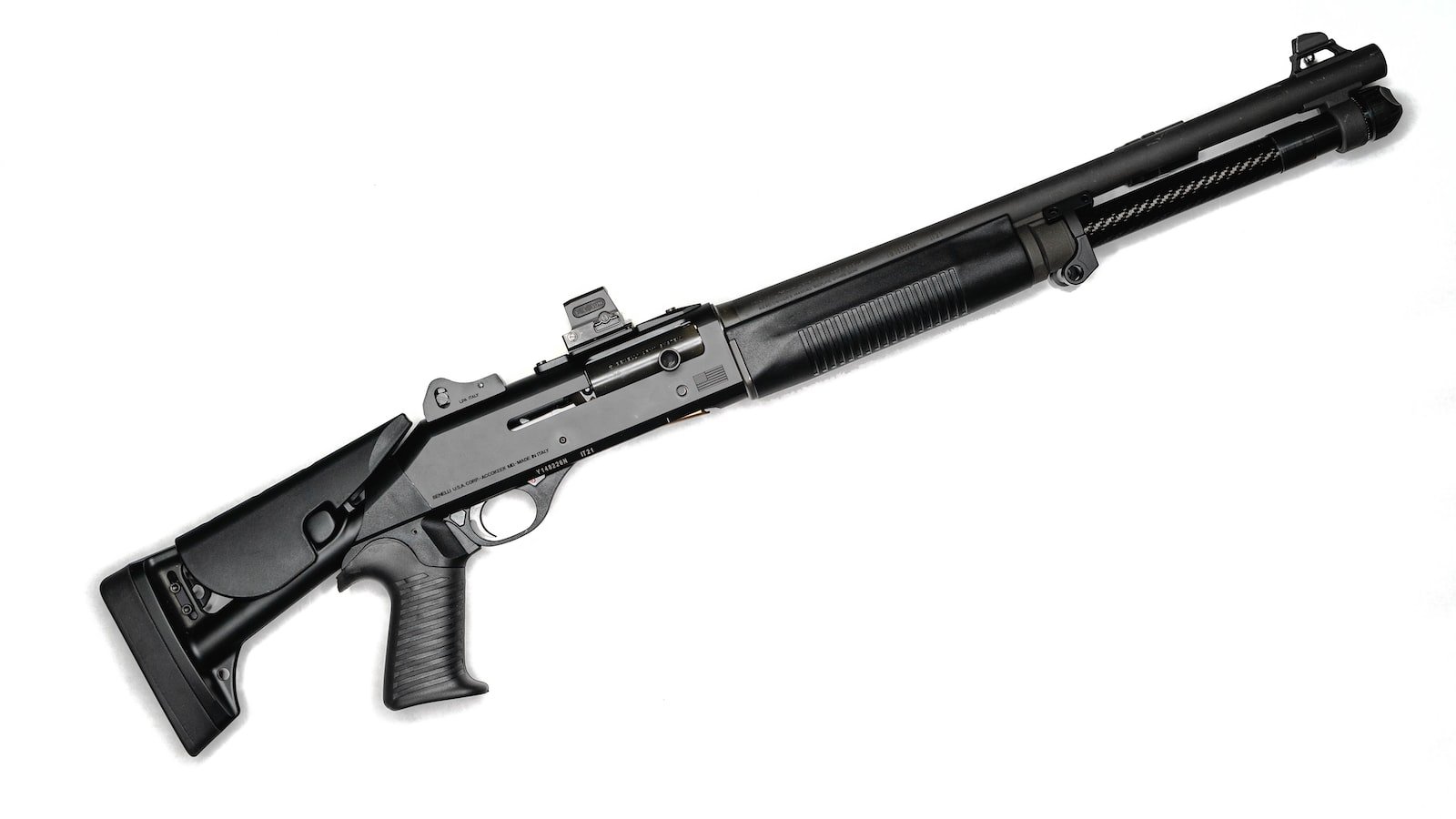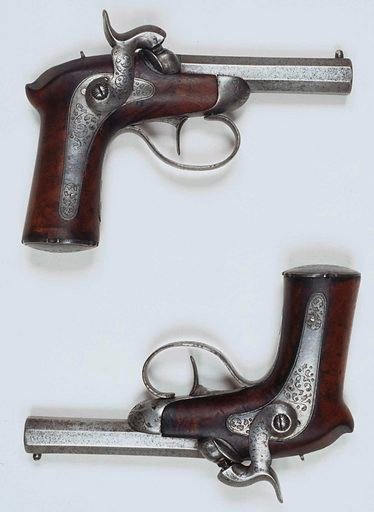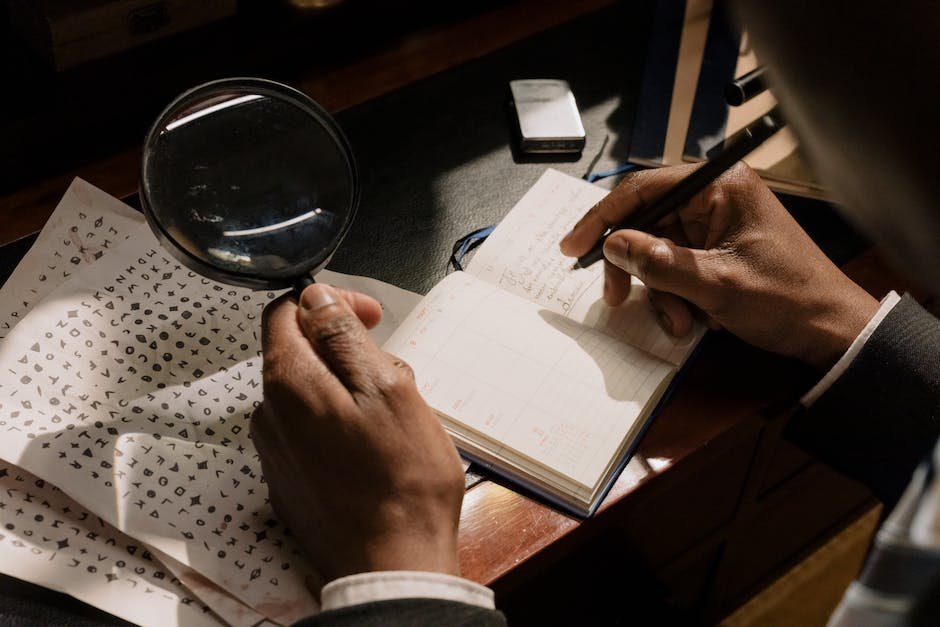Locked in place, its components intricately intertwined, a gun lock stands as a silent sentinel, faithfully guarding against tragedy. With the potential to save countless lives, understanding the inner workings of this unassuming yet mighty device becomes essential. Delving into the depths of its mechanisms, this comprehensive guide aims to unravel the enigma, shedding light on the profound question that lingers in the minds of many: how, exactly, does a gun lock work?
Table of Contents
- Introduction: Understanding the Importance of Gun Safety and Locking Mechanisms
- Exploring the Components: Anatomy of a Gun Lock and its Mechanisms
- Decoding Functionality: How Different Types of Gun Locks Operate
- Choosing the Right Gun Lock: Factors to Consider for Optimal Safety
- Ensuring Proper Usage: Best Practices and Guidelines for Effective Gun Locking
- Q&A
- Final Thoughts

Introduction: Understanding the Importance of Gun Safety and Locking Mechanisms
As responsible gun owners, it is essential to prioritize the safety of ourselves and those around us. Understanding the importance of gun safety and the effective use of locking mechanisms is crucial in preventing accidents, theft, and unauthorized access to firearms. By implementing proper safety measures, we can contribute to a safer and more secure environment for everyone.
Locking mechanisms play a vital role in ensuring that firearms are only accessible to authorized individuals, keeping them out of the hands of children, potential intruders, and individuals who may have prohibited access. Gun locks, safes, and other secure storage options provide an extra layer of protection, reducing the risk of accidents or malicious intent.
- Preventing unauthorized access: Properly securing firearms with locking mechanisms is an effective way to prevent unauthorized access. Whether it is a cable lock, trigger lock, lockbox, or a biometric safe, these mechanisms act as barriers, keeping firearms out of reach of those who should not handle them.
- Safeguarding against accidents: Gun safety and locking mechanisms go hand in hand. Accidental discharges and mishandling of firearms can have devastating consequences. Utilizing locking mechanisms adds an extra layer of protection, minimizing the risks associated with accidental discharge, especially in households where children or inexperienced individuals may be present.
- Deterrent against theft: A securely locked firearm can act as a deterrent against theft. Implementing strong locking mechanisms and utilizing secure storage options can significantly reduce the likelihood of guns being stolen, limiting their availability on the black market and preventing them from potentially falling into the wrong hands.
In conclusion, understanding the importance of gun safety and the use of effective locking mechanisms is pivotal in promoting a responsible gun ownership culture. By ensuring our firearms are secure and inaccessible to unauthorized individuals, we contribute to a safer society while minimizing the risks associated with accidents, theft, and unauthorized usage.

Exploring the Components: Anatomy of a Gun Lock and its Mechanisms
Gun locks are an essential aspect of firearm safety, designed to prevent unauthorized use and accidental discharge. Understanding the anatomy of a gun lock and its mechanisms is crucial for responsible gun owners.
The primary component of a gun lock is the locking device, which is usually made of durable materials such as hardened steel. This device is responsible for securing the firearm in place, rendering it inoperable until the lock is removed. It typically consists of a key-operated cylinder or a combination lock for added security.
Another critical component is the shackle, which is the part of the lock that fastens around the firearm. It is essential that the shackle is sturdy and resistant to tampering or forced removal. Gun locks may also include auxiliary components like cables or chains, allowing for additional securing options.
Inside the gun lock, you will often find internal mechanisms that ensure smooth operation. These mechanisms can vary depending on the type of lock, but they generally involve intricate systems of levers, pins, and springs. These mechanisms work together to ensure that the lock can only be opened with the appropriate key or combination.
By exploring the components and mechanisms of a gun lock, gun owners can gain a deeper understanding of how these safety devices function. This knowledge helps promote responsible firearm handling and ensures that guns are stored securely when not in use. Remember, always prioritize safety and invest in quality gun locks for peace of mind.
Decoding Functionality: How Different Types of Gun Locks Operate
Gun locks are an essential tool when it comes to promoting firearm safety. Understanding how different types of gun locks operate is crucial in choosing the right lock for your needs. There are several variations of gun locks on the market, each offering varying levels of security and ease of use.
– Trigger Locks: These locks are designed specifically to prevent the trigger from being pulled, ensuring the firearm is unable to discharge. Trigger locks typically consist of a lock body that is fitted around the trigger housing, rendering it inoperable. Some trigger locks also feature a key or combination lock mechanism, providing an additional layer of security.
– Cable Locks: Cable locks are versatile and easy to use. They consist of a strong cable that is looped through the gun’s action or magazine well and secured with a lock. This type of lock is particularly useful for securing firearms that have no obvious locking points.
– Chamber Locks: Chamber locks are specifically designed to physically obstruct the chamber of a firearm, preventing the insertion of ammunition and rendering the gun inoperable. These locks are typically made of durable materials such as metal or polymer and are inserted directly into the chamber, providing an effective lock that cannot be easily circumvented.
Understanding the functionality of different types of gun locks empowers gun owners to make informed decisions about firearm safety. Whether it’s a trigger lock, cable lock, or chamber lock, investing in a lock that suits your specific needs can help prevent unauthorized access to firearms, ensuring the safety of you and those around you.
Choosing the Right Gun Lock: Factors to Consider for Optimal Safety
Factors to Consider for Optimal Safety
When it comes to gun safety, choosing the right gun lock is of paramount importance. Not only does it provide a layer of protection against unauthorized access, but it also ensures the safety of those around you. There are several factors to consider before making your decision, all aimed at maximizing safety and minimizing potential risks.
1. Type of Lock:
- Trigger Lock: This type of lock fits around the trigger, preventing it from being pulled. It is easy to install and provides a basic level of security.
- Cable Lock: A cable lock secures the firearm by looping a cable through the action or around the barrel. It is versatile and can be used with various types of guns.
- Biometric Lock: These locks use fingerprint recognition technology to ensure only authorized users can access the firearm. They provide quick and secure access in case of emergencies.
2. Durability and Reliability:
Consider the durability and reliability of the gun lock. Look for locks made of high-quality materials that can withstand impact and tampering attempts. A reliable lock should provide consistent performance over an extended period.
3. Compatibility:
Make sure to choose a gun lock that is compatible with your specific firearm model. Different locks are designed to fit various guns, so ensure a proper fit to prevent any potential issues or vulnerabilities.
By taking these factors into account, you can select the right gun lock that suits your needs and ensures optimal safety. Remember, responsible gun ownership starts with securing your firearms properly.
Ensuring Proper Usage: Best Practices and Guidelines for Effective Gun Locking
Gun safety is of utmost importance to ensure the well-being of both firearm owners and those around them. Best practices and guidelines for effective gun locking play a crucial role in minimizing accidents and unauthorized access to firearms. By following these practices, gun owners can enhance safety measures and promote responsible gun ownership.
When it comes to gun locking, several best practices should be considered. First and foremost, it is vital to store firearms in a locked container or safe. This not only prevents accidental discharge but also deters theft and unauthorized access. A gun lock, such as a cable or trigger lock, should be utilized in addition to the safe or container, providing an extra layer of protection.
Furthermore, it is recommended to separate ammunition from firearms and store them in different locations. This reduces the risk of an accidental discharge and ensures that firearms cannot be loaded without intent. Additionally, keeping firearms unloaded when not in use and utilizing chamber flags as a visible indicator further enhances safety precautions.
In order to educate others on proper gun locking, it is essential to follow these guidelines. Gun owners should share their knowledge and best practices with family members, friends, and anyone who may come into contact with firearms. Additionally, encouraging others to invest in gun safes or lockboxes and promoting the use of trigger locks can significantly contribute to preventing accidents and unauthorized use.
Remember, ensuring proper usage through best practices and guidelines for effective gun locking is everyone’s responsibility. By implementing these recommendations, we can collectively work towards a safer environment for gun owners and the community as a whole.
Q&A
How does a gun lock work?
A gun lock is designed to prevent unauthorized access to a firearm. It usually consists of a locking mechanism that attaches directly to the gun and renders it inoperable until the lock is removed. This ensures the firearm cannot be discharged accidentally or unlawfully.
What are the common types of gun locks available?
Some common types of gun locks include cable locks, trigger locks, and chamber locks. Cable locks prevent the gun from being loaded or fired, while trigger locks secure the gun by immobilizing the trigger. Chamber locks block the gun’s chamber, preventing cartridges from being inserted.
Are gun locks universally compatible with all firearms?
While most gun locks are designed to be compatible with a wide range of firearms, it’s important to choose the correct lock for your specific gun. Different locks may have different locking mechanisms or sizes to match various firearm models.
How can a gun lock be installed?
The installation process of a gun lock may vary depending on the type, but generally, it involves attaching the lock to the appropriate parts of the firearm as per the manufacturer’s instructions. It is essential to follow the instructions carefully to ensure proper installation and functionality.
Do gun locks provide sufficient security?
Gun locks are intended to deter unauthorized access, especially in households with children or individuals who are not proficient in handling firearms. However, they are not foolproof and should not be considered a substitute for other safety measures such as safe storage or training.
Can a gun lock be easily removed?
A gun lock can usually be removed through a key or combination provided with the lock. However, it is crucial to ensure that the lock is removed only when the firearm is in a safe environment and under appropriate circumstances to avoid accidents.
Are there any laws or regulations regarding gun locks?
Laws and regulations on gun locks vary by jurisdiction. It is important to research and comply with local laws to ensure you are using a lock that meets the legal requirements of your area. Additionally, always consult with legal professionals for specific advice.
Final Thoughts
As our journey through the intricacies of gun locks comes to an end, we find ourselves armed with knowledge that empowers us to protect and ensure the safety of ourselves and those around us. Each tiny component of a gun lock plays its part in a carefully choreographed symphony of security, reassuring us that every possible measure has been taken to prevent accidents and misuse.
From the sturdy steel construction of the lock itself, to the intricate mechanisms that prevent unauthorized access, we have delved deep into the inner workings of this vital safety feature. The brilliant minds that crafted these locks deserve our admiration for their relentless dedication to enhancing the responsible use of firearms.
Through our exploration, we have come to understand the profound importance of gun locks in the broader conversation surrounding gun safety. They are not mere accessories, but rather indispensable tools in the pursuit of a safer society. By familiarizing ourselves with their mechanisms, we open the door to a world where responsible gun ownership and accident prevention go hand in hand.
Remember, knowledge is the key that unlocks the doors to a safer future. Armed with this newfound understanding, we can engage in productive discussions, advocate for responsible gun ownership, and encourage the use of gun locks as an essential aspect of responsible firearm use.
As we conclude our comprehensive guide on how a gun lock works, let us embrace the power of education, respect, and awareness. Together, we can weave a tapestry of safety that prioritizes the well-being of all. Let our finger pause, but our commitment to fostering a secure environment endure, for it is in unity that we truly find strength.
May this guide stand as a testament to our tireless pursuit of knowledge, and may it inspire a world where the sound of a locked gun symbolizes peace, security, and safeguarded lives.
As an affiliate, my content may feature links to products I personally use and recommend. By taking action, like subscribing or making a purchase, you’ll be supporting my work and fueling my taco cravings at the same time. Win-win, right?
Want to read more? Check out our Affiliate Disclosure page.